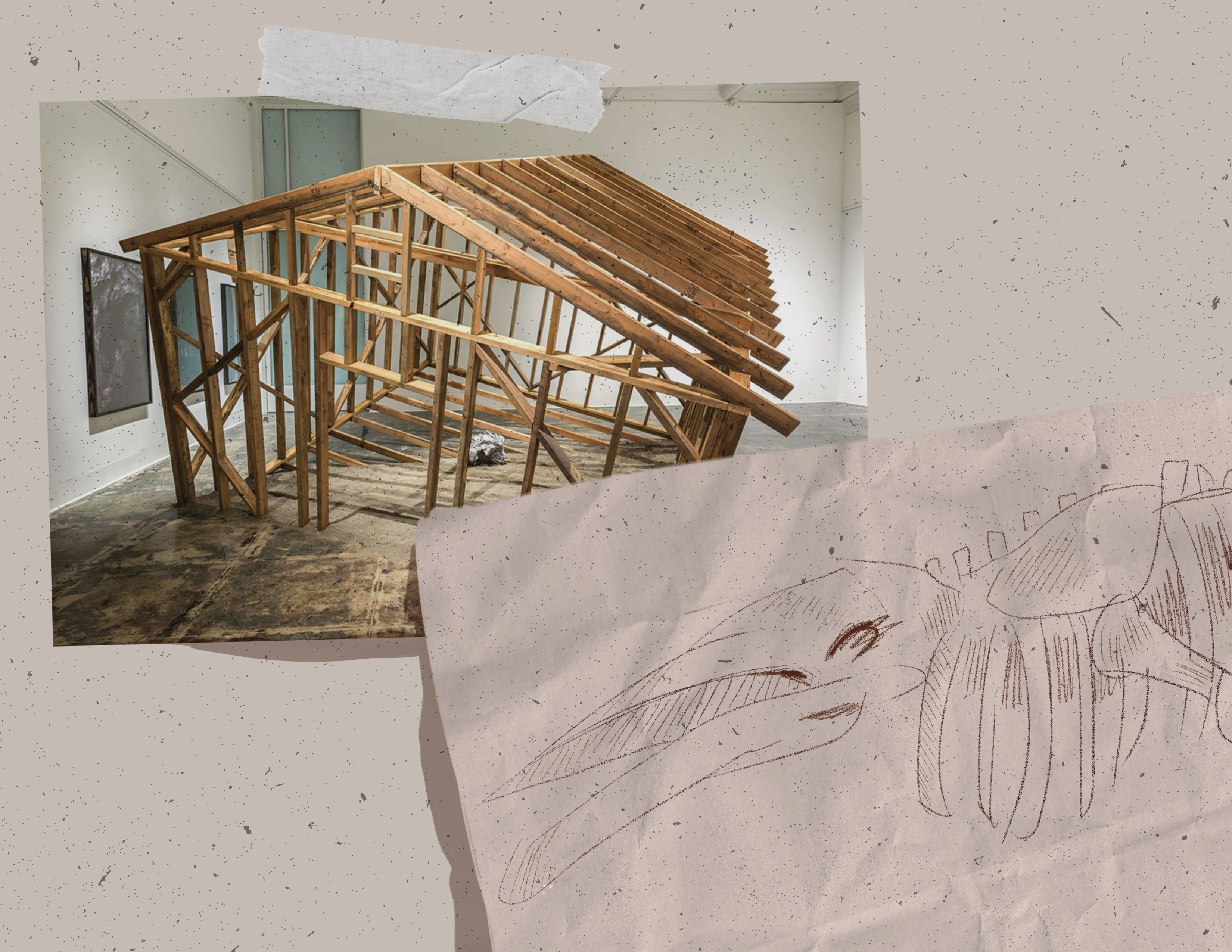Mixed media artist Mark Baugh-Sasaki was chosen as the Doerr School of Sustainability’s first visiting artist. His residency is the initial iteration of a pilot collaboration between artists and Stanford researchers to expand the modes planned for sustainability practices.
Baugh-Sasaki’s work includes a variety of mediums, ranging from photography, wood sculptures, metal installations and earth and land art. His collaboration with the Doerr School entails working with researchers who are investigating fossils in a patch of sediment in the Southern Ocean to uncover information about the blue whale ecosystem during periods of industrial farming.
This interview has been edited for brevity and clarity.
The Stanford Daily [TSD]: Could you introduce yourself and your art practice?
Mark Baugh-Sasaki [MBS]: I’m Mark Baugh-Sasaki, I’m a San Francisco-based artist. I was actually born and raised in the city as well. I did my undergrad in fine art about 10 years ago and developed a practice back in San Francisco. From there, I taught for a bit and continued working on my practice.
My art deals with the relationship between buildings and what we consider to be the “natural world,” thinking about landscape as a vessel for human experiences, allowing us to think about our role within the landscape.
This is actually my first time collaborating with a scientist, but science has always played an important role in my work. Something that’s kind of interesting about science and art is that we’re both looking at the same problem in different ways.
TSD: You’ve mentioned this intersection of art and technology. Part of Doerr’s visiting artist program asks how we can include art in the space of technology. How do you see your role in relation to their scientific work on climate change?
MBS: My role in this is not necessarily developing technology, or even bringing technology into my work. I think it’s more like “what are the implications of things like habitat restoration and why? Who are we? Why are we thinking about that?”
All of this is in relation to restoration, right? So what’s really interesting to us is thinking about the idea of trying to restore ecosystems to the way that they were before we were there. Instead of trying to make it invisible, as if we weren’t there, maybe there is some meaning — and why should we hide it? These are questions we’re going to ask ourselves. We don’t know the answers to them yet and we don’t know if we ever will, but that’s the process.
TSD: Thinking about this idea of process, what is the project you’re going to spearhead as the new fellow, and how did that process start? What was the ideation, how was it developed and where is it going?
MBS: I was approached to apply to this opportunity out of a shortlist of folks, and then I interviewed with the lab and researchers and Stanford Arts folks. You know, everybody wants to know what the project is going to be. I don’t know.
I told them at that meeting too, because the whole point is you request this collaboration, and have that back and forth communication. We need time to just be freely talking and figuring it out. I have a lot of experience in making and building, so that’s not the hard part. It’s figuring out the ideas and concepts and what we want to talk about and how we want to talk about it. So that has been our focus.
Their realm is natural science, which is something I’m unfamiliar with. The art world is new to them, too. So a lot of this has just been, “You just get to know me.” We need to build trust in each other. We talk about different ideas or ideologies, thinking about “How am I going to change your work? Are you going to change my work?”
I don’t know, but that takes a lot of trust. I don’t think they would let me write something in their research summary. So I’m trying to bring them into my process, and hopefully, there are ways to achieve physical help and input.
TSD: I know part of the collaboration has to do with portions of the Southern Ocean and whale preservation. How did that come to be and how is that interacting with your art?
MBS: The lab works with whales in the Southern Ocean through an interdisciplinary lens. They’re bringing three different methods to analyze the Southern Ocean floor and are using that to create a baseline and figure out what restoration will look like.
In terms of how that affects my work, marine biology has always been an interest of mine, so I’m super excited. Learning more about Antarctica and the ecosystem down there is fascinating, even all the geopolitical stuff that’s going on down there. One of the things that I really enjoyed is that part of the treaty that defines Antarctica essentially says no one can claim Antarctica as its property, but they’ll have research stations down there, and they’re all essentially products of Cold War land grab.
That treaty defines the boundaries of what parts of Antarctica is “wilderness.” It defines what wilderness even is. I think that the language that surrounds how we talk about nature and landscape systems is really fascinating. It shapes how we perceive our relationship to the natural world and is used to separate us from it as opposed to being part of it.
And I’m just really excited. I get to meet people that I wouldn’t otherwise know, so I’m really enjoying just having these conversations with everybody. All the folks. And Hopkins is amazing; the researchers there have been really welcoming. So really it’s the conversations that’s the most exciting part.
